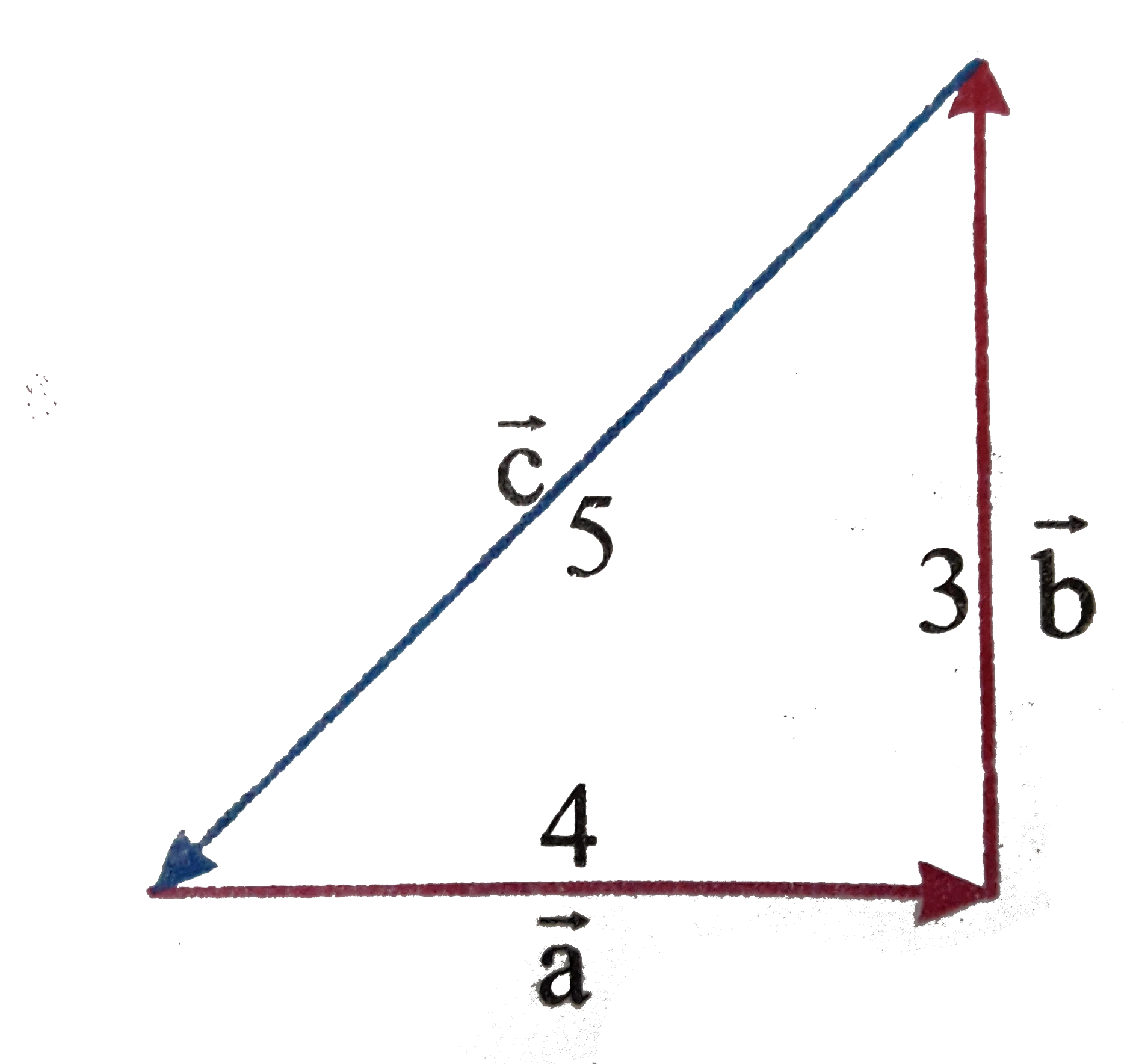If →a,→band→c determine the vertices of a triangle, show that 12[→b×→c+→c×→a+→a×→d] givens the vector area of the triangle. Hence, deduce the condition that the three points →a,→band→c are collinera. Also, find the unit vector normal to the plane of the triangle.
Since, →a,→band→c are the vertices of a ΔABC as shown.

:. Area of ΔABC=12∣∣∣−−→AB×−−→AC∣∣∣
Now, −−→AB=→b−→aand−−→AC=→c−→a
:.Area of ΔABC=12∣∣→b−→a×→c−→a∣∣
=12∣∣→b×→c−→b×→a−→a×→c+→a×→a∣∣
=12∣∣→b×→c+→a×→b+→c×→a+→0∣∣
=12∣∣→b×→c+→a×→b+→c×→a∣∣.......(i)
For three points to be collinear, area of the ΔABC should be equal to zero.
⇒12[→b×→c+→c×→a+→a×→b]=0
⇒→b×→c+→c×→a+→a×→b=0.......(ii) This is the requried conddition for collinearity of three points →a,→band→c.
Let ˆn be the unit normal to the plane of the ΔABC.
∴ˆn=−−→AB×−−→AC∣∣∣−−→AB×−−→AC∣∣∣
=→a×→b+→b×→c+→c×→a∣∣→a×→b+→b×→c+→c×→a∣∣
Topper's Solved these Questions
Similar Questions
If→a,→b,→c are the position vectors of the vertices A,B,C of a triangle ABC, show that the area triangle ABCis12∣∣→a×→b+→b×→c+→c×→a∣∣. Deduce the condition for points →a,→b,→c to be collinear.
View SolutionIf →a,→b,→c be three non coplanar vectors show that →b×→c,→c×→a,→a×→b are non coplanar.
View Solution
Knowledge Check
- Question 1 - Select One
The vector area of triangle whose sides are →a,→b,→c is
A12∣∣→b×→c+→c×→a+→a×→b∣∣B12∣∣→b×→c+→c×→a+→b∣∣C13∣∣→b×→c+→c×→a+→b∣∣D12∣∣−→b×→c+→c×→a+→b∣∣ - Question 2 - Select One
In a righht angled triangle the three vectors →a,→b and →c add to zero. Then →a,→b is
 A−9B+9C0D−3
A−9B+9C0D−3 - Question 3 - Select One
If →a,→b,→c are the position vectors of the vertices. A,B,C of a triangle ABC. Then the area of triangle ABC is
A12∣∣→a×→b+→b×→c+→c×→a∣∣B12∣∣→a×→b∣∣C12∣∣→b×→c∣∣D12|→c×→a|
If →a,→band→c are the position vectors of vertices A,B,C of a ΔABC, show that the area of triangle ABC is 12∣∣→a×→b+→b×→c+→c×→a∣∣. Deduce the condition for points →a,→band→c to be collinear.
View SolutionA(1,2,5),B(5,7,9),andC(3,2,−1), are given three points. A unit Vector normal to the plane of the triangle ABC.
View SolutionLet →a,→b and →c be any three vectors; then prove that [→a×→b→b×→c→c×→a]=[→a→b→c]2
View SolutionFind the area of the triangle formed by joining the mid-points of the sides of the triangle whose vertices are (0,−1),(2,1)and(0,3). Find the ratio of this area to the area of the given triangle.
View SolutionIF →a,→b,→c are the position vectors of the vertices of an equilateral triangle whose orthocentre is at the origin, then
View Solution

